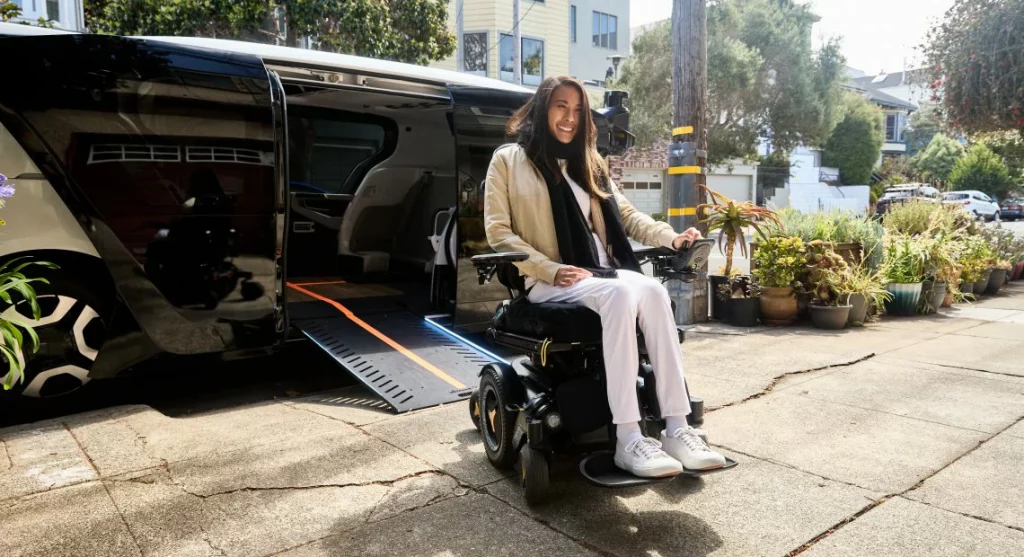Cruise, the autonomous vehicle company owned by General Motors, has revealed a self-driving car that’s accessible for wheelchair users, known as the Cruise WAV. This vehicle, to be introduced in San Francisco, aims to enhance mobility options for people with disabilities, a group encompassing around 42 million Americans. Cruise intends to kick off a pilot program for the WAV next year.
More Accessible Transportation
The primary goal of the WAV is to broaden transportation choices for individuals with disabilities, addressing a significant need. Carrie Morton, GM’s Chief Engineer of Accessibility, emphasized the importance of accessibility within the autonomous vehicle sector.
Key attributes of the Cruise WAV are a user-friendly ramp and a wheelchair securement system, with enough room for one wheelchair user and a companion. Cruise worked closely with experts in the disability community and accessible vehicle and equipment manufacturers to ensure the WAV meets high accessibility standards.
Testing of Wheelchair-Accessible Robotaxi in Bay Area
Set to launch in October, the WAV will be the world’s first self-driving vehicle designed specifically for wheelchair accessibility.
Created to tackle transportation challenges encountered by wheelchair users, the WAV features a retractable ramp that enables independent boarding from the curb, along with two securement systems: one for power wheelchairs and another using straps for manual wheelchairs.
The exact timeline for deploying Cruise WAVs for commercial use in San Francisco remains uncertain, as it awaits regulatory approvals. Nevertheless, the announcement of this pioneering robotaxi signifies an advancement for the disability community.
Michele Lee, Cruise’s Senior Public Affairs Manager for Accessibility, highlighted the potential impact of the WAV on nearly 6 million wheelchair users in the United States.
The upcoming closed-circuit testing phase in Concord in October will focus on refining ramp deployment under real-world conditions, seat-belt design, and ensuring compatibility of securement systems with various wheelchair models.
New Robotaxi Regulation is a Boon
Cruise’s mission is to enhance accessibility and enable individuals to use its services independently. This announcement comes after California regulators granted Cruise and Waymo unrestricted commercial expansion rights for robotaxis in San Francisco.
Amid ongoing debates about the readiness of Cruise and Waymo to safely deploy robotaxis, the Cruise WAV brings hope to people with disabilities. People who use a wheelchair anticipate improved and expanded robotaxi services.
The Cruise WAV is our next big step toward a more inclusive and accessible future for mobility.

